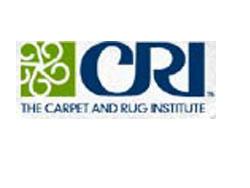CRI Says Critical Report Ignores Developments
Dalton, GA, June 15, 2010--The president of the Carpet and Rug Institute says questions raised in a recently-published white paper critical of CRI's signature Seal of Approval (SOA) testing and certification program for carpet cleaning products have long since been addressed and resolved.
The paper, titled, "Discussion Regarding a Novel Method: The Use of X-Ray Fluorescence for Quantitative Analysis of Elements in Carpet," was produced and paid for by Racine Industries, a longtime critic of the SOA program.
The document specifically targets components of the SOA testing that use X-Ray Fluorescence, or XRF, to identify and measure carpet soil removal in vacuums and extractors.
XRF imaging was originally developed and used by NASA as part of the Space Shuttle program. According to Braun, the Racine paper rehashes old information and raises meaningless questions. "There is nothing [in the document] that has not been addressed either before or since the SOA program was introduced at NASA's John F. Kennedy Space Center in the Fall of 2004," CRI President Werner Braun said.
"It is disappointing to see questions listed as unanswered when we have, in fact, answered Racine Industries on multiple occasions in writing."
The following Carpet and Rug Institute responses address concerns expressed in the Racine report:
Will an independent validation study be planned and completed?
At this time, an independent validation study has been completed and the scientific paper is undergoing peer review prior to publication. It is important to note that the SOA Program was developed in a collaborative effort with significant input from the carpet cleaning community. In fact, the workgroup tasked with developing the Seal of Approval protocol for CRI's Cleaning and Maintenance Issues Management Team included a majority of cleaning professionals and manufacturers.
Will a protocol be released?
The protocols for the SOA, like the protocols for all of CRI's signature programs, were released over five years ago and have always been available on the CRI website. It is ironic that, although Racine Industries firmly states that the SOA protocols are misguided, they also report that they have never seen them. Which scenario represents the truth?
Will the reported concentrations of the compounds be reproducible outside of the one licensed laboratory performing this method?
The CRI protocol is readily available to any laboratory, and CRI has repeatedly stated its desire for other laboratories to undergo certification to perform XRF testing. To date, Professional Testing Laboratory is the only facility that has invested in the necessary equipment and expertise to conduct the testing, but that situation is now and has always been open to change.
Will a determination of relevance be conducted to see if the laboratory-generated results actually apply to the field?
This also has been done--repeatedly, in fact. First, CRI and Professional Testing validated the use of NASA-designer soil in the SOA protocols. Soil-filled vacuum cleaner bags were collected from locations across the United States. After comparison testing, the NASA-designed soil was found to be consistent with the various soil samples collected.
Related Topics:The International Surface Event (TISE), Carpet and Rug Institute
